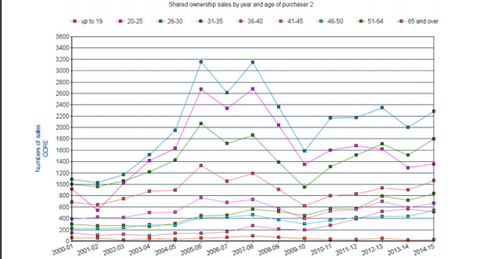Shared ownership has been around for decades. But despite huge demand – more than 80,000 people a year register or express an active interest in buying a shared ownership home every year – it has never quite established itself as a mainstream product within the housing market. Until now.

New research by the Chartered Institute of Housing (CIH) and Orbit has suggested a significant and surprising surge in public awareness of shared ownership, aligned with a growing appetite from both consumers and mortgage lenders. It appears the flywheel is finally turning.
A survey of some 2,000 people by leading polling firm Ipsos Mori found that shared ownership was at least as well-known as the Right to Buy, probably one of Margaret Thatcher’s most iconic policy interventions.

But while Right to Buy is very much a ‘Marmite’ product with many detractors, most commentators broadly agree that shared ownership is a ‘good thing’ delivering both affordability and aspiration in equal measure.
The fact that it has penetrated public consciousness to such a degree is to my mind a stunning success – although the research does have interesting things to say about age and income differentials in this regard. This is down to three main factors:
Big time backing
Firstly, Government backed shared ownership big time under the previous leadership of David Cameron by putting in more than £4b of investment, reducing some of the unnecessary and unhelpful red tape, and promoting it as part of its home ownership drive.
Secondly, the inexorably growing affordability gap has driven consumers into the arms of shared ownership out of necessity, despite historic drawbacks around mortgage choice, customer experience and unfair but sticky ‘sub-prime’ product perceptions.

Finally, housing associations have picked up the baton and not just run with it, but upped their game in marketing and sought to engage mortgage lenders in understanding and backing the product as a mainstream option.
There is much more to do. The CIH and National Housing Group – which has done much to sort our data issues and improve marketing – are putting the final touches to a charter to improve the customer experience, due to be published in March. We still need more lenders in the market. And we also need more housing associations to take the plunge and get involved. But two years on from our original report, things are looking very rosy indeed.






























No comments yet